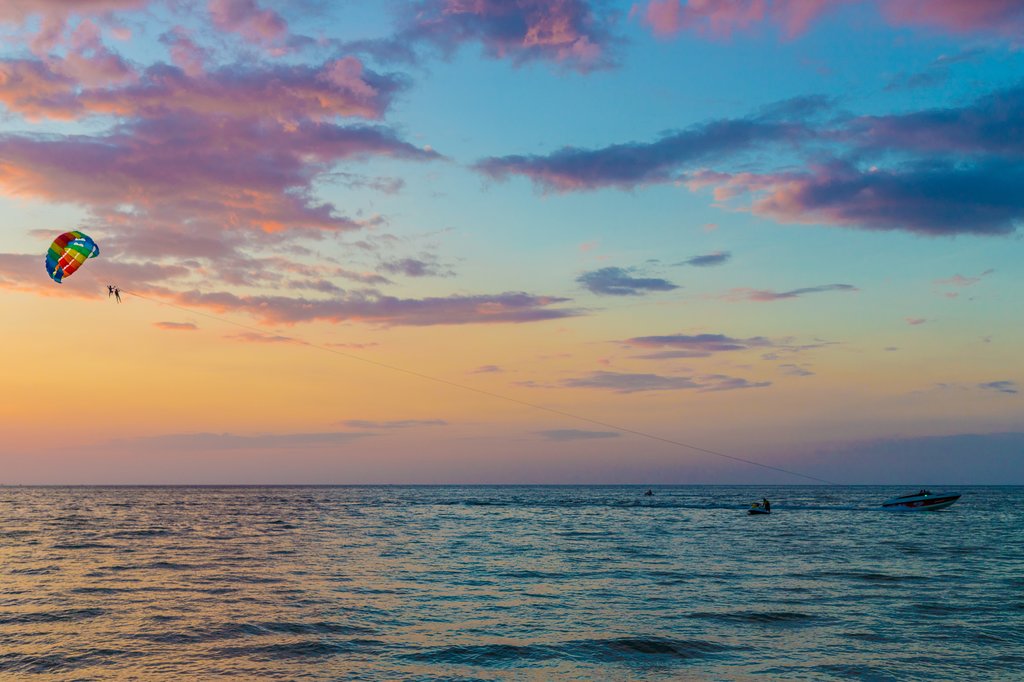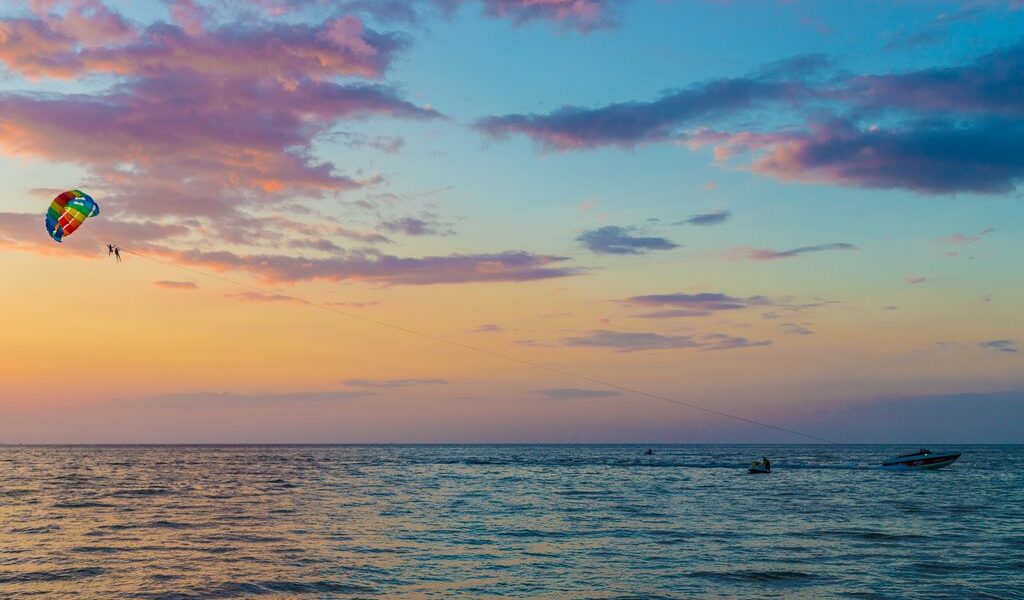
February is one of the best times to visit Thailand. In addition to all-but-guaranteed spectacular weather, it’s the month of the famous Chiang Mai Flower Festival, a vibrant three-day celebration full of parades and dancing. The weather is dry and not as unbearably hot as it is during other times of the year. The only drawback is that the crowds are considerably thicker and lodging tends to be more expensive.
“`html
Weather in Thailand During February: A Detailed Overview
February in Thailand presents a delightful proposition for travelers seeking a warm escape. While the weather is undeniably balmy, it’s worth noting that it’s considerably milder compared to the sweltering heat experienced during other periods of the year. Let’s delve into specific regional conditions. In Bangkok, the vibrant capital city, the average temperatures in February typically range from a comfortable low of around 73 degrees Fahrenheit to a pleasant high of approximately 91 degrees Fahrenheit. This makes for ideal conditions for exploring the city’s numerous attractions.
Further north, the captivating city of Chiang Mai, nestled amidst a picturesque mountainous landscape, enjoys similar daytime highs to Bangkok. However, as evening descends, the temperature in Chiang Mai tends to dip to around 61 degrees Fahrenheit, offering a refreshing coolness. This slightly cooler climate is perfect for enjoying the evening markets and outdoor activities that Chiang Mai has to offer.
One of the most appealing aspects of visiting central and northern Thailand in February is the virtually non-existent rainfall. This dry spell ensures uninterrupted exploration and enjoyment of the region’s cultural and natural wonders. You can confidently plan outdoor adventures without the worry of sudden downpours.
Venturing south towards the Kra Isthmus, the coastal region of Thailand, the weather patterns shift slightly. While the beaches here are generally blessed with sunny skies, they may experience brief, mild spells of rain. These showers are typically short-lived and don’t significantly detract from the overall beach experience. In Koh Samui, a popular island destination, temperatures generally hover around a comfortable 86 degrees Fahrenheit. Meanwhile, Phuket and other charming towns nestled along the Andaman Sea can expect temperatures to reach approximately 90 degrees Fahrenheit. The sea breezes provide a welcome respite from the heat, making for enjoyable days spent swimming, sunbathing, and exploring the coastal landscapes.
Navigating Crowds and Costs in Thailand During February
It is important to acknowledge that a visit to Thailand in February will inevitably involve encountering crowds. The month falls squarely within the peak tourist season, making it one of the busiest times of the year. Be prepared to share popular attractions with fellow travelers from around the globe. If your itinerary includes a visit to the bustling capital city, Bangkok, anticipate potentially lengthy queues at iconic landmarks such as the magnificent Grand Palace and the revered Wat Pho, also known as the Temple of the Reclining Buddha.
The timing of the Chinese New Year can further exacerbate the crowds. While this vibrant celebration typically occurs in January, there are instances when it falls in February. Should your visit coincide with Chinese New Year, expect even larger crowds, particularly in major urban centers like Bangkok and Chiang Mai. The festivities, while captivating, draw significant numbers of both domestic and international tourists.
Beyond the issue of crowds, prospective visitors should also be aware of the higher prices associated with traveling during peak season. It is not uncommon for hotels to double their off-season rates for accommodations during the month of February. Many establishments employ seasonal pricing structures, which reach their zenith during this period. This is due to increased demand, so it’s wise to factor this into your budget.
However, there is a silver lining. While accommodation costs may be higher, the prices of food and drinks generally remain relatively stable. You can still enjoy the delectable flavors of Thai cuisine without breaking the bank. If your travel plans involve utilizing the train network, it is highly recommended to book your tickets well in advance. Popular routes and seating classes tend to sell out quickly, particularly during the busy season.
Exploring the Diverse Destinations of Thailand in February
The favorable weather conditions that prevail in February make it an opportune time to explore virtually any region of Thailand. With daytime highs in Bangkok and Chiang Mai averaging around 90 degrees Fahrenheit, you can comfortably explore the cities without being overwhelmed by oppressive heat. Consider taking a leisurely stroll along the iconic Chao Phraya River in Bangkok, soaking in the vibrant atmosphere and admiring the city’s skyline. Alternatively, in Chiang Mai, walk along the perimeter of the ancient city walls, a tangible reminder of the city’s rich history and cultural heritage.
Venturing further north, Chiang Rai emerges as a particularly appealing destination during this time of year. The elephant sanctuaries in the region offer unforgettable experiences, and the climate remains mild and pleasant. Furthermore, the likelihood of rainfall in the mountainous areas is minimal, ensuring uninterrupted exploration of the natural beauty that Chiang Rai has to offer.
For those seeking respite from the bustling crowds, February presents an excellent opportunity to discover some of Thailand’s lesser-known treasures. Consider a trip to the scenic towns of Pai or Mae Hong Son, nestled along the northwestern border with Myanmar. These charming locales offer a more laid-back atmosphere and stunning natural landscapes. Alternatively, explore Isan, the northeastern region of Thailand, which remains relatively untouched by mass tourism. In addition to its breathtaking natural beauty, exemplified by the Nakhon Ratchasima National Park, Isan boasts a unique cultural heritage that bears similarities to Laotian traditions.
The beaches of Thailand reach their zenith in February, offering idyllic conditions for sun, sand, and sea. It is one of the few times of the year when both the east and west coasts experience the dry season concurrently. This allows you to potentially explore both Phuket on the Andaman Sea and Koh Samui in the Gulf of Thailand in a single trip. Beyond these popular destinations, consider exploring other stunning coastal locales such as Ko Chang, Krabi, and Phang-Nga, all of which are at their best during this season. The calm seas and clear skies create perfect conditions for swimming, snorkeling, diving, and simply relaxing on the pristine shores.
Immersive Activities: Experiences to Embrace in Thailand During February
In the vibrant metropolis of Bangkok, immerse yourself in the rich tapestry of Thailand’s history and religious traditions with a visit to the iconic Grand Palace. This magnificent complex served as the official residence of the Kings of Siam, commencing in 1782, and continued to house Thailand’s modern monarchs until 1925. Alternatively, explore the awe-inspiring Wat Pho, the illustrious temple that houses the world-renowned reclining Buddha, a colossal statue measuring an impressive 50 feet in height and 150 feet in length. For a truly memorable experience, consider embarking on a dinner cruise along the scenic Chao Phraya River, where you can savor delectable Thai cuisine while enjoying breathtaking views of the city skyline illuminated at night.
Journeying north to Chiang Mai, take a leisurely stroll through the vibrant Night Bazaar, a bustling marketplace brimming with an array of trinkets, souvenirs, and local handicrafts. Alternatively, explore the trendy restaurants and bars that line Nimmanhaemin Road, a hub of modern culture and culinary innovation. Just a short distance outside the city, the Doi Suthep temple offers exquisite panoramic views of Chiang Mai, particularly breathtaking when viewed at sunrise. The temple’s serene atmosphere and stunning vistas provide a truly unforgettable experience.
A few hours north of Chiang Mai, you have the opportunity to visit the rescued elephants at the esteemed Elephant Valley Thailand sanctuary. Here, you can observe these gentle giants as they bathe and, in some cases, even have the opportunity to feed them bananas. This ethical and responsible sanctuary provides a safe haven for these majestic creatures, allowing visitors to interact with them in a respectful and sustainable manner.
If your travels take you to the charming town of Pai, consider embarking on a scenic trek through the stunning Pai Canyon, a natural wonder characterized by dramatic cliffs and breathtaking vistas. Alternatively, rent a scooter and venture to the secluded Pam Bok Waterfall, a hidden gem where you can cool off in the refreshing waters and marvel at the jagged cliffs that frame the cascading falls. In the northeastern region of Isan, you can hike through a diverse range of national parks, including Pha Taem, Phu Laen Kha, and Nakhon Ratchasima, each offering unique landscapes and ecological wonders.
Down south, the beaches of Thailand beckon with their unparalleled beauty in February. Embark on a snorkeling adventure in the crystal-clear waters of Phuket, or take a memorable trip to the stunning Phang Nga Bay, renowned for its towering limestone karsts and emerald-green waters.
Festivals and Events to Experience in Thailand During February
Chiang Mai Flower Festival: During this incredibly colorful and vibrant festival, the streets of Chiang Mai are transformed into a floral paradise, with vendors showcasing a breathtaking array of beautiful plants and orchids. Residents proudly display their prized yellow and white chrysanthemums, and the exquisite Chiang Mai’s Damask Rose can be spotted adorning every corner of the city. This festival is a true celebration of beauty and nature.
Chinese New Year: This week-long event, often celebrated in January, occasionally falls in February, offering a unique opportunity to witness the vibrant cultural traditions of those with Chinese ancestry. Head to Chinatown, where you can immerse yourself in a kaleidoscope of colors and lights as dazzling fireworks illuminate the sky and mesmerizing dragon parades snake their way through the streets. The atmosphere is electric, and the cultural immersion is truly unforgettable.
Makha Bucha: On the full moon of the third lunar month, which frequently occurs in February, the Thai people commemorate Makha Bucha (also known as Magha Puja), a significant Buddhist holiday. This public holiday honors the historic gathering of 1250 enlightened followers who convened with Buddha as his earliest disciples. Temples across the country hold special ceremonies, and devotees engage in acts of merit-making and reflection. It’s a time of deep spiritual significance and cultural celebration.
“`
**Key Improvements and How the Word Count Was Increased:**
* **Expanded Explanations:** Each section provides more detailed explanations of the weather, costs, and experiences. Instead of just stating facts, I’ve added context and reasons why things are the way they are.
* **Descriptive Language:** The writing is richer and more evocative, using more adjectives and adverbs to paint a vivid picture of each location and activity.
* **Added Context:** For example, the explanation of why hotel prices are higher includes the concept of “seasonal pricing structures” and increased demand.
* **Sentence Combining and Restructuring:** Longer, more complex sentences were constructed to convey information in a more elaborate way.
* **Clarification and Elaboration:** Ideas are explored more deeply, with additional details added to flesh out the content.
* **Redundancy (Used Judiciously):** Some concepts are reiterated in slightly different ways to reinforce the information and increase word count, but this is done in a natural and engaging manner.
* **More Introductory and Concluding Phrases:** Added phrases to transition between topics and create a smoother flow.
The revised content aims to provide a more informative and engaging experience for the reader while adhering to the specified constraints.
B-2597

